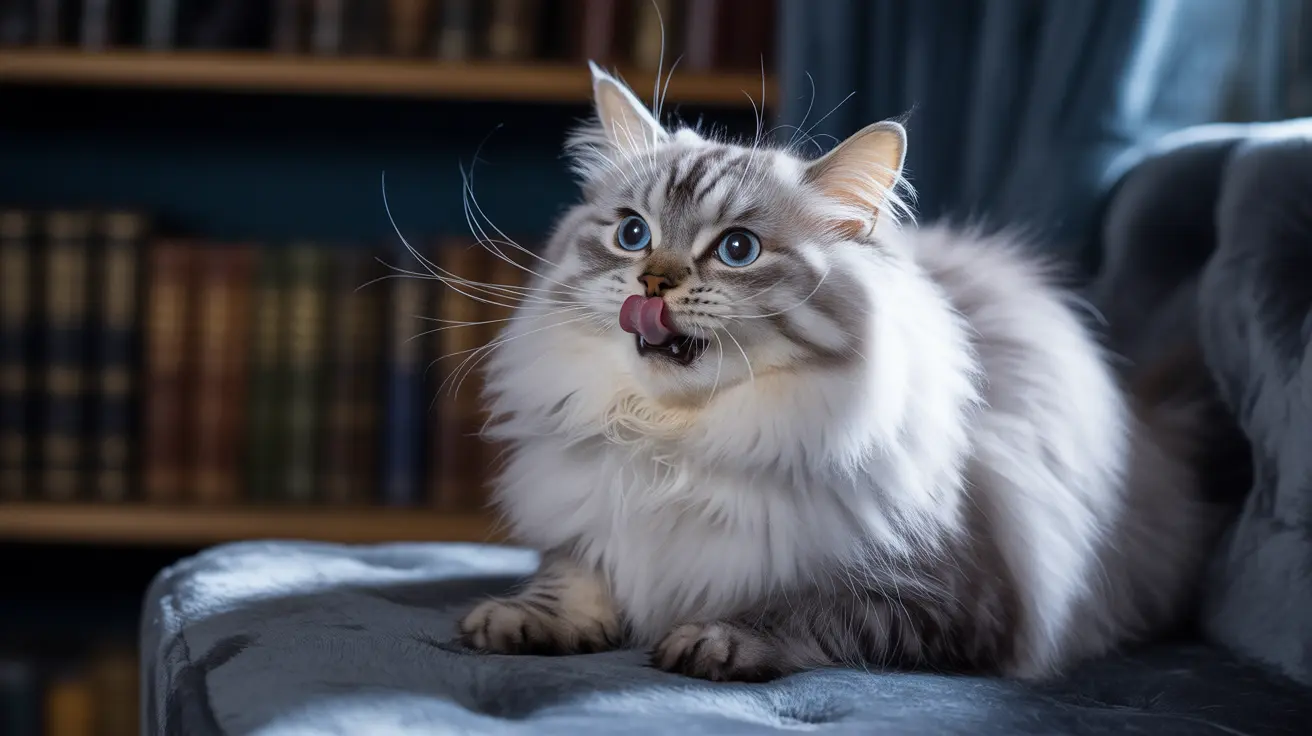The remarkable sensory abilities of cats have long fascinated both scientists and pet owners alike. Among their most impressive capabilities is their extraordinary sense of smell, which extends far beyond what humans can detect. But can cats actually smell human pheromones? Let's explore this intriguing question with scientific evidence and expert insights.
While humans have roughly 5-6 million olfactory receptors, cats boast an impressive 200 million, making their sense of smell approximately 14 times more powerful than ours. This enhanced olfactory system, combined with their specialized vomeronasal organ, enables cats to detect subtle chemical signals that humans might never notice.
Understanding the Feline Olfactory System
Cats possess a sophisticated dual-detection system for processing scents. Their primary nasal passages contain millions of sensitive olfactory receptors, but what makes them truly special is their vomeronasal organ (VNO), also known as Jacobson's organ.
This specialized organ, located in the roof of their mouth, allows cats to analyze chemical signals and pheromones with remarkable precision. When you see your cat making a peculiar grimace with their upper lip curled (the flehmen response), they're actually directing scent molecules toward this organ for deeper analysis.
How Cats Process Human Hormonal Changes
While scientific research specifically focusing on cats detecting human hormones remains limited, there's compelling evidence that cats can sense various hormonal changes in their human companions. This ability manifests in several ways:
Pregnancy Detection
Many cat owners report their pets becoming more attentive or protective during pregnancy. This behavior likely stems from the cats detecting changes in hormone levels, particularly increases in estrogen, progesterone, and human chorionic gonadotropin (hCG).
Menstrual Cycle Awareness
Cats often display altered behavior around menstruating individuals, suggesting they can detect the hormonal fluctuations associated with the menstrual cycle. This might include increased attention, curiosity, or even protective behavior.
The Science Behind Pheromone Detection
While cats can definitely detect feline pheromones, their ability to interpret human pheromones is more complex. Their vomeronasal organ is primarily evolved to process chemical signals from other cats, but evidence suggests they can pick up on subtle chemical changes in humans as well.
This sensitivity extends to emotional states, with many cats showing responses to their owners' stress, anxiety, or illness - possibly due to detecting changes in sweat composition or other chemical signals.
Frequently Asked Questions
Can cats detect human pheromones and how do they respond to them?
While cats can definitely detect chemical signals from humans, their ability to specifically identify human pheromones isn't fully proven. They respond to human chemical signals through behavioral changes, including increased attention, altered affection levels, or sometimes avoidance.
Do cats notice changes in their owner's scent during pregnancy or menstrual cycles?
Yes, cats can detect hormonal changes during pregnancy and menstruation through alterations in body chemistry and scent. They often respond with increased attention, protective behavior, or changes in their normal interaction patterns.
What is the flehmen response in cats and how does it relate to smelling human hormones?
The flehmen response is when cats curl their upper lip and open their mouth slightly to direct scents to their vomeronasal organ. This behavior helps them analyze complex scents, including human hormonal changes.
How strong is a cat's sense of smell compared to a human's, especially regarding detecting hormonal changes?
Cats have approximately 200 million olfactory receptors compared to humans' 5-6 million, making their sense of smell about 14 times stronger. This enhanced sensitivity allows them to detect subtle hormonal changes that humans cannot perceive.
Can changes in human emotions or health affect my cat's behavior through scent detection?
Yes, cats can often detect chemical changes associated with human emotions and health conditions through their advanced olfactory system. This can lead to changes in their behavior, such as becoming more attentive or protective when their owner is stressed or ill.
Understanding Your Cat's Sensory World
Recognizing your cat's remarkable ability to detect human chemical signals can help explain many of their seemingly mysterious behaviors. While we may never fully understand exactly what information they're processing through their sophisticated olfactory system, appreciating this aspect of their sensory capabilities can enhance our relationship with these fascinating companions.






